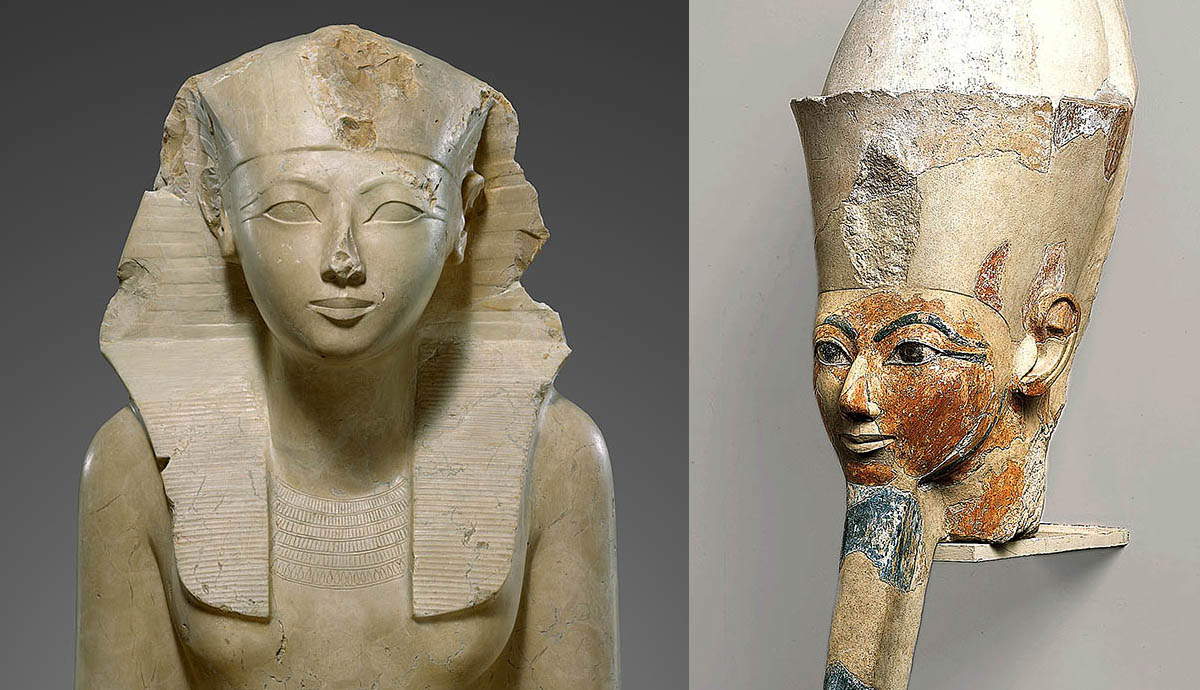🧬 A discovery buried for millennia has resurfaced — and it’s rewriting everything we thought we knew about Egypt’s most enigmatic queen.
From the royal tombs of Thebes to the gleaming labs of Cairo, scientists have uncovered secrets in Queen Hatshepsut’s DNA that are sending shockwaves through the archaeological world. The once “lost” pharaoh — celebrated as Egypt’s first great female ruler — is now the center of a revelation that could challenge not only her story, but the origins of Egyptian civilization itself.
For years, experts believed Hatshepsut’s story was one of ambition and power — the queen who dared to rule as king. But recent genomic sequencing of her mummy has revealed something far more astonishing. Hidden deep within her DNA are genetic anomalies that trace back to a mysterious, pre-Egyptian population — a group older than the earliest dynasties.
💥 The finding has sparked a wildfire of debate: could Hatshepsut’s bloodline descend from a civilization long vanished from history — perhaps the very culture that inspired Egypt’s divine kingship?
This groundbreaking discovery began in 2007, when Dr. Zahi Hawass and his team identified Hatshepsut’s remains by matching a missing tooth found in a box inscribed with her name. But it wasn’t until 2023 that scientists, armed with next-generation DNA sequencing, made the true breakthrough. Her maternal haplogroup — the genetic marker passed down from mother to child — didn’t match any known Egyptian royal line. Instead, it pointed to a lineage linked to ancient peoples of the eastern Sahara, suggesting her ancestors might have carried knowledge and traditions that seeded early Egyptian society.
And that’s not all. The same DNA analysis uncovered something deeply human — and tragic. While earlier theories claimed Hatshepsut was poisoned or murdered, the new data points instead to a rare autoimmune disease, possibly lupus. This would explain her fragile bones, swelling, and fatigue — symptoms misread by ancient embalmers as signs of divine transformation. Her death, it seems, was not from betrayal… but from her own body slowly turning against her.
Adding yet another twist, scientists examining the resins used in her mummification found compounds similar to modern frankincense oil, suggesting the use of sophisticated preservation techniques centuries ahead of their time. Could these practices have come from the same forgotten culture her DNA points to — a civilization whose knowledge shaped Egypt’s earliest beliefs about life, death, and divinity?
Today, historians and geneticists are divided. Some warn against “rewriting history” based on incomplete data. Others argue that this discovery may finally explain the mythic roots of Egypt’s royal bloodlines — the idea that pharaohs were descendants of gods, not merely mortals.
👑 If Hatshepsut’s DNA truly links her to an ancient, lost people — could that be the origin of Egypt’s divine dynasty?
What began as a quest to identify a queen has now become a mystery stretching beyond recorded time. As scientists dig deeper into her genes, one thing grows clear: Hatshepsut was not just a ruler of Egypt — she may have been the bridge between civilizations.
The sands of Egypt have whispered her name for 3,000 years. Now, through the language of DNA, she is finally answering back.
👉 The world watches as new discoveries unfold — and the story of Queen Hatshepsut continues to defy the boundaries of history, science, and myth itself.





